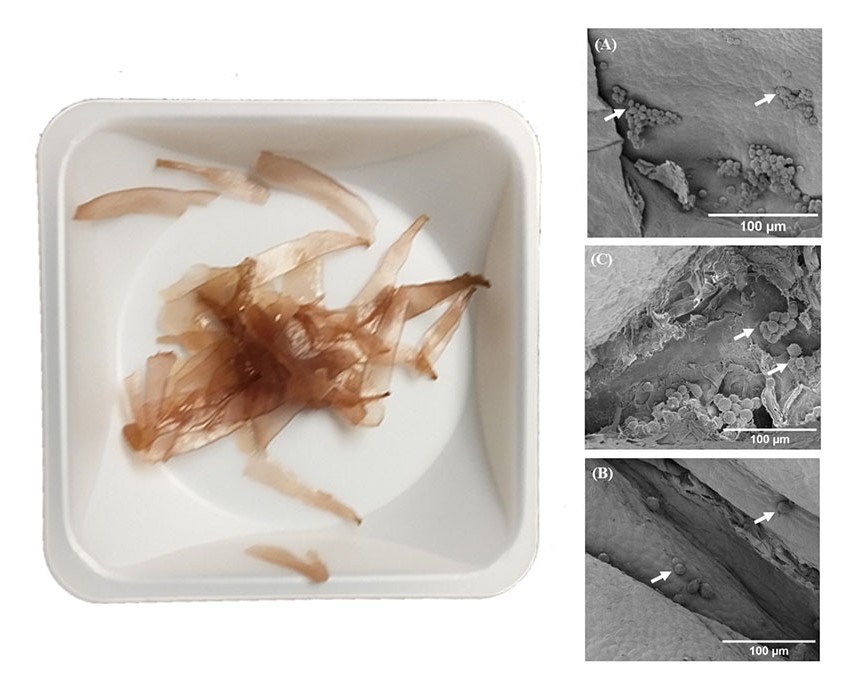The well-known superfood demonstrates excellent biocompatibility with cardiomyocytes, cells found in adult heart ventricles.
From the Journal: Biointerphases

WASHINGTON, Oct. 21, 2025 — Seaweed is found around the world. In fact, the name “seaweed” comprises a diverse range of species, from microscopic phytoplankton to the giant forests found in various bodies of water.
Seaweed species aren’t just crucial parts of marine ecosystems, though; they also provide numerous health benefits for humans and have been dubbed a superfood by marketing companies, a term used to encompass healthy, nutrient-rich foods.
In Biointerphases, an AVS journal published by AIP Publishing, researchers from Oregon State University found yet another use for seaweed as a cheap, vegan, and eco-friendly tissue scaffold.
“Rather than using animal-derived or synthetic [chemically derived scaffolds], we want to utilize naturally found materials to produce the tissues, especially for use in preclinical testing,” said author Gobinath Chithiravelu.
Tissue scaffolds are used in tissue engineering to provide a stable, structural environment for cells to grow. It’s not just the biocompatibility of seaweed that makes it a promising candidate; seaweed scaffolds provide a great alternative to animal testing.
The researchers sourced their seaweed from a commercial brand they originally discovered at a farmers market. After cleaning and drying the marine red seaweed, known as Pacific dulse, they removed the cells from it, leaving only the extracellular matrix (ECM). The ECM of Pacific dulse is compatible with human cardiomyocytes, which are cells found in adult heart ventricles.
“So initially, we want to utilize the natural framework [of the seaweed] — we don’t want to disturb the structure,” said Chithiravelu.
Once the cells were grown on the seaweed scaffold, they were analyzed to identify which conditions were most similar to the native scaffold of the cells. The team identified the best initial treatments that promoted the tissue’s growth into fibrous networks and reduced cell interference from the seaweed. This showed that treatment with the reagent sodium dodecyl sulfate, which is commonly found in labs, is an effective treatment to prepare the seaweed scaffold.
In the end, they found that all their seaweed scaffolds had excellent biocompatibility with the cardiomyocytes, showing a promising future for this line of research. Not only will these scaffolds decrease animal testing at the preclinical phase, but they are a cost-effective and eco-friendly alternative to synthetic scaffolds.
“Why can’t we utilize seaweed? It’s abundant in the oceans and — when compared with animal derived or synthetic material — the cost is very low,” said Chithiravelu.
###
Article Title
Development and optimization of decellularized seaweed scaffolds for tissue engineering
Authors
Gobinath Chithiravelu, Marion J. Jones, Ivana Hernandez de Estrada, Yadvendra Singh, Harish Subbaraman, and Binata Joddar
Author Affiliations
Oregon State University
Biointerphases
Biointerphases, an AVS journal published by AIP Publishing, emphasizes quantitative characterization of biomaterials and biological interfaces. As an interdisciplinary journal, a strong foundation of chemistry, physics, biology, engineering, theory, and/or modelling is incorporated into original articles and reviews. See: https://pubs.aip.org/avs/bip.
